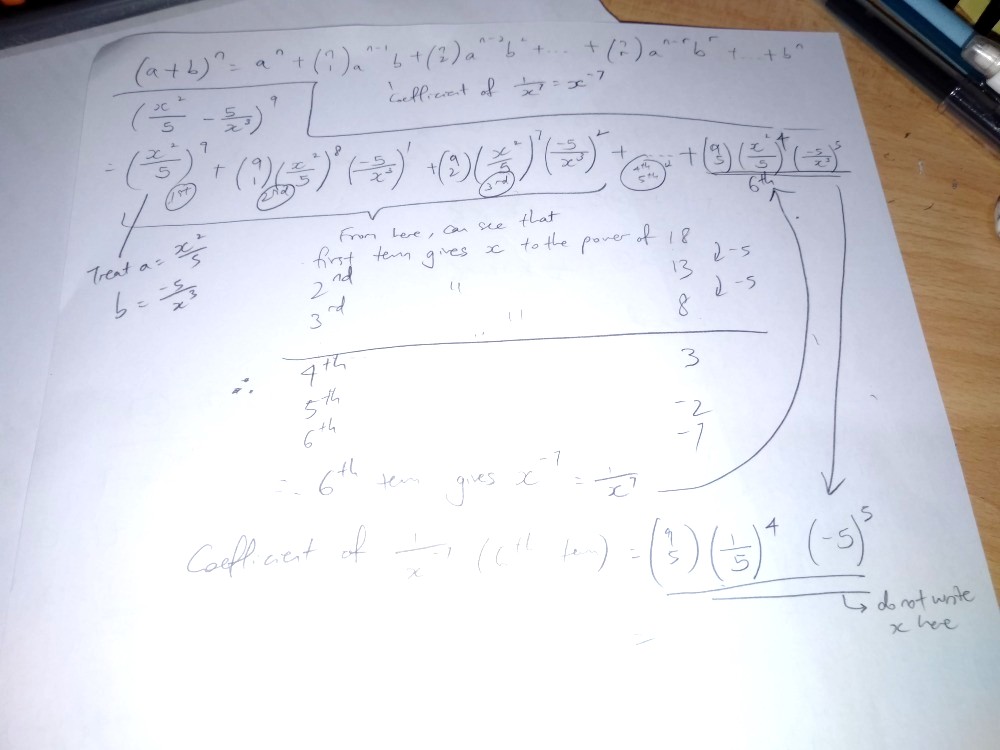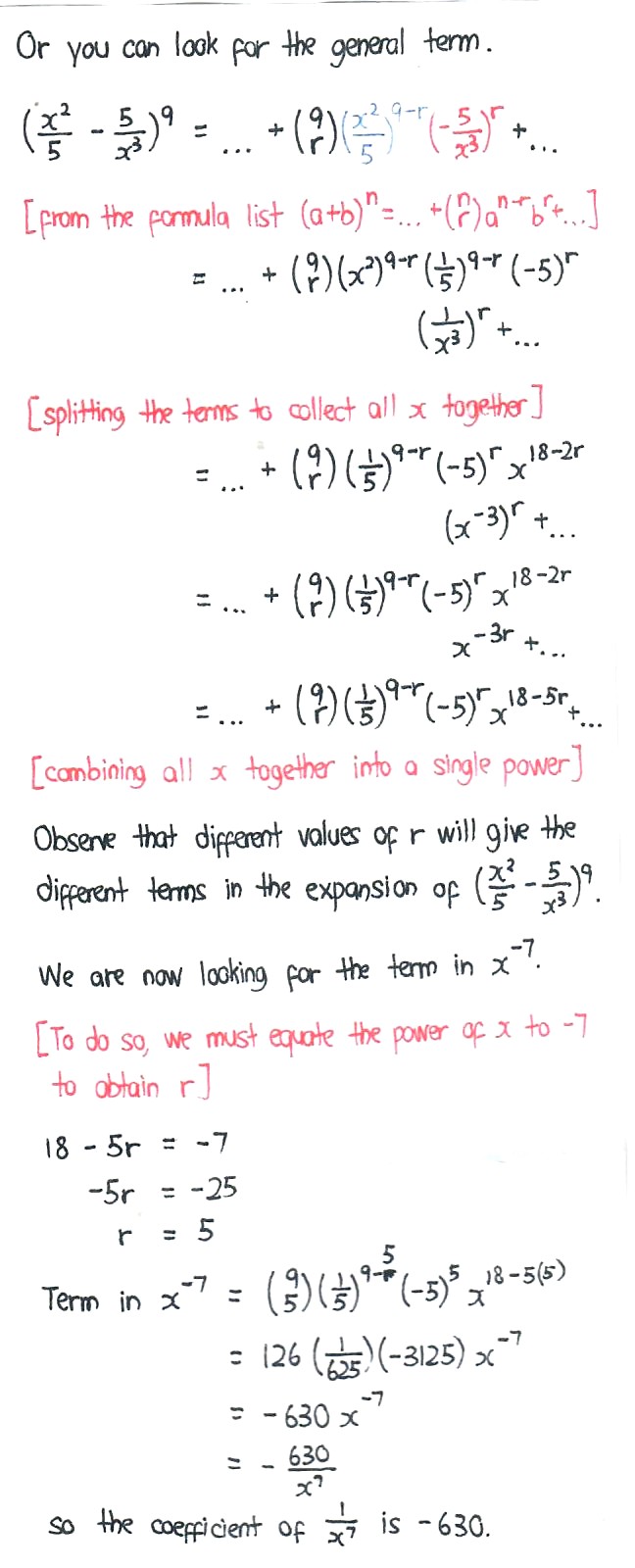Ask Singapore Homework?
Upload a photo of a Singapore homework and someone will email you the solution for free.

See 2 Answers
done
{{ upvoteCount }} Upvotes
clear
{{ downvoteCount * -1 }} Downvotes
Coefficient is the number before the x^-7 term
Date Posted:
5 years ago
done
{{ upvoteCount }} Upvotes
clear
{{ downvoteCount * -1 }} Downvotes
An alternative, but related, approach is to simply obtain the particular term required rather than fully expanding the entire expression.
This can be done by writing the general term of the expansion, which simply picks out any one term out of the full expansion (adding all the different general terms together gets you the full expansion).
After writing the general term in terms of r, we collect all the powers of x together into a single power of x by using a bit of the rules of indices.
Different values of r will get you the different terms in the expansion (by virtue of the different powers of x). No two values of r will get you the same power of x in the expansion.
After simplification, I find that the power of x is 18 - 5r.
When r = 0, the power of x in the expansion is 18 (this is the first term in the full expansion).
When r = 1, the power of x in the expansion is 13 (this is the second term in the expansion).
When r = 2, the power of x in the expansion is 8 (this is the third term in the expansion).
This goes all the way until r = 9, when the power of x in the expansion is -27 (this is the tenth and last term in the expansion).
We find that the power of x is -7 when r = 5 (you can do so by setting the power of x, 18 - 5r, to -7).
With this value r = 5, we obtain the required general term.
The coefficient of x^-7 is simply the numerical attached to the x^-7 (there is no need to write the x^-7 for the coefficient).
This can be done by writing the general term of the expansion, which simply picks out any one term out of the full expansion (adding all the different general terms together gets you the full expansion).
After writing the general term in terms of r, we collect all the powers of x together into a single power of x by using a bit of the rules of indices.
Different values of r will get you the different terms in the expansion (by virtue of the different powers of x). No two values of r will get you the same power of x in the expansion.
After simplification, I find that the power of x is 18 - 5r.
When r = 0, the power of x in the expansion is 18 (this is the first term in the full expansion).
When r = 1, the power of x in the expansion is 13 (this is the second term in the expansion).
When r = 2, the power of x in the expansion is 8 (this is the third term in the expansion).
This goes all the way until r = 9, when the power of x in the expansion is -27 (this is the tenth and last term in the expansion).
We find that the power of x is -7 when r = 5 (you can do so by setting the power of x, 18 - 5r, to -7).
With this value r = 5, we obtain the required general term.
The coefficient of x^-7 is simply the numerical attached to the x^-7 (there is no need to write the x^-7 for the coefficient).
Date Posted:
5 years ago







